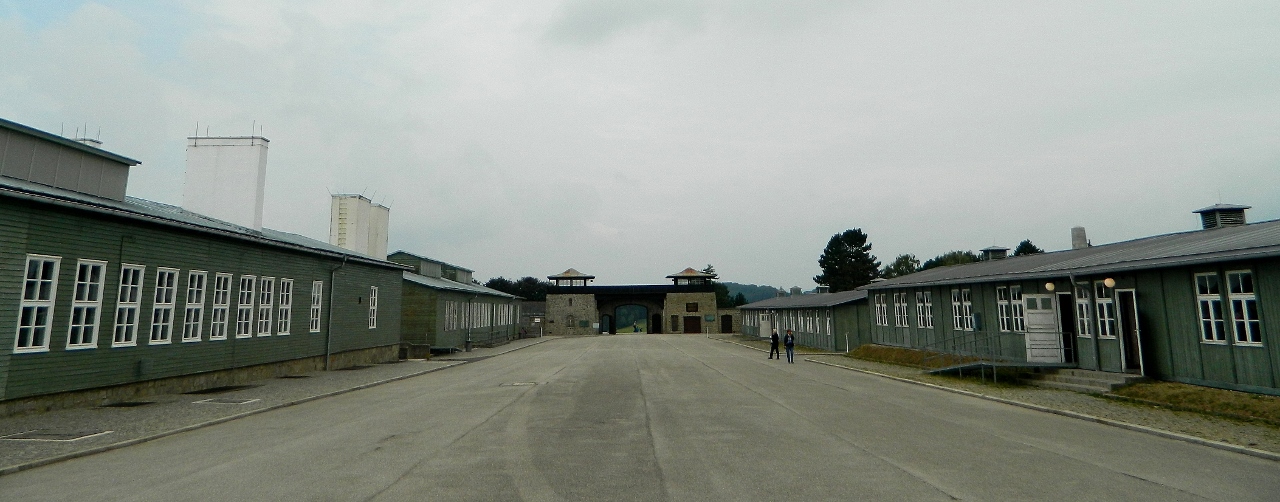Driving out of Linz through the vast industrial landscape of steel works, power plants and chemical factories, past belching chimneys and overhead railways and negotiating a series of raised roadways and bewildering junctions, was testing on the nerves. We were both relieved to get onto the scenic route and pick up the riverbank once again.
The road wound up and down through a series of pretty forested gorges. At the highest point in open land stands the vast walled complex of Mauthausen Memorial, the former notorious concentration camp.
Between 1938 and its liberation in 1945 it is estimated that around 200,000 people were deported to the camp, as political prisoners or simply members of a social or racial group that the Nazis wanted obliterated. They were made to work in huge granite quarries digging out and transporting the stone which Hitler demanded for the colossal programme of architecture planned in Nazi Germany and including Linz. They were quite simply worked to death.

As the war raged on, the inmates were tasked from quarrying to making armaments. A series of satellite camps grew up around Mauthausen, including at Linz where inmates initially built then toiled in the steelworks. Mauthausen remained a category three camp for the persecution and execution of supposedly political or ideological ‘criminals’. It is thought that at least half of the people imprisoned there died at the camp either in its gas chamber, by execution, from starvation, disease, beating or by lethal injection.
When the Nazis evacuated their concentration camps in the East ahead of the Red Army’s liberation, thousands of exhausted camp inmates were forced on marches to Mauthausen to die.

It was a ghastly and sinister place which was lauded at the time by the local Austrian governor who declared it ‘an honour’ that Mauthausen should be chosen as the site of a concentration camp. A very thought-provoking and meticulously researched exhibition presented the stark realities of life and death within its walls. Like the many other visitors to the memorial that morning we walked quietly and thoughtfully around the grounds and then gratefully away.
We spent the afternoon driving gently along the scenic route through the Nibelungau, a wildly romantic stretch of the Donau through forested hillsides and often, mists. It’s the landscape that inspired the vengeful legend of the Song of the Nibelung, and the composer Wagner.
Ruined fortresses lined the curves of the river and beneath them pretty walled medieval hamlets.
We skirted the magnificent hilltop abbey at Melk and entered the Wachau Valley where we found our aire along the riverside at Aggsbach Markt. Sitting on the banks of the Donau we gazed up at the 12th century Burgruine Aggstein, one of the sights of this stretch of the river and in perfect rugged outline against the high blue sky.
Our aire was part of a riverside biergarten, so after an amble through the village admiring the well-tended gardens, sluices for melting winter snows and painted houses, it was easy enough to enjoy a glass of beer and reflect on a day of diverse emotions. Tomorrow we would venture deeper in to the Wachau Valley.






